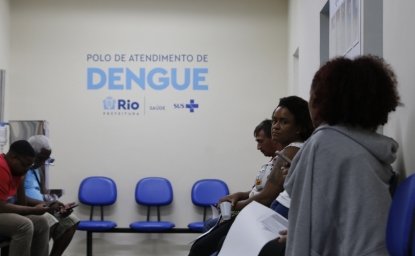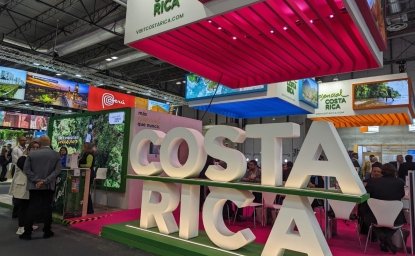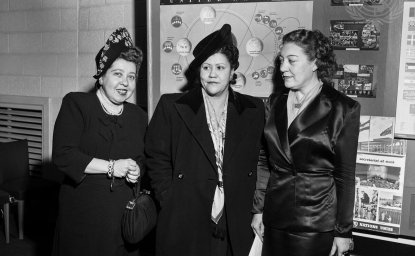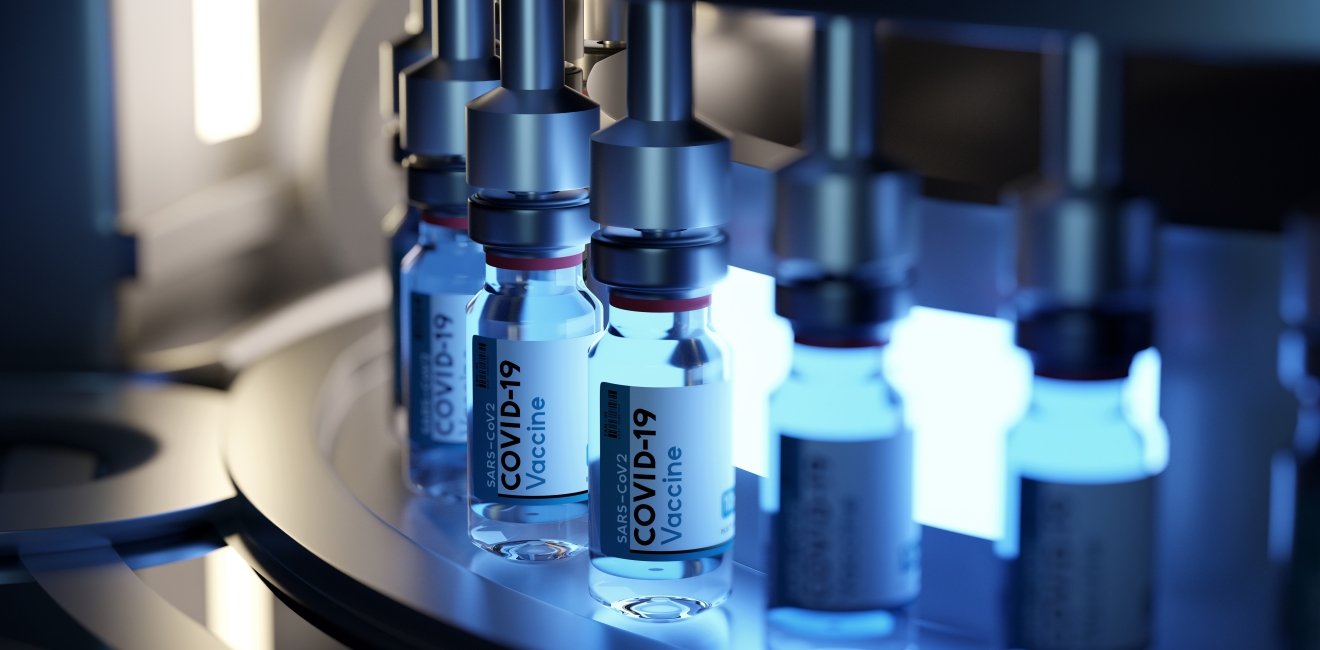
A blog of the Latin America Program
More than a year after the coronavirus made landfall in Latin America, the region has suffered 33 million cases and over a million fatalities. Despite high-profile “medical diplomacy” from countries such as the United States and China, the region’s COVID-19 response has suffered from chronic shortages of critical medical equipment and vaccines. To public health professionals, that was hardly a surprise: Latin America is heavily dependent on imports of medical supplies and less than 4 percent of medical products used in the pandemic originated in the region. The same is true for vaccines. As the region suffers a new wave of the pandemic, less than 5 percent of Latin Americans are vaccinated.
Fortunately, there are exceptions. Argentina, Brazil and Mexico, though ineffective at controlling the coronavirus’s spread, have retooled their local medical manufacturing resources to supplement international supplies and contribute to the regional pandemic response.
In 20th century Argentina, import substitution industrialization policies helped develop local manufacturing capabilities. Buoyed by subsidies and shielded from competition, manufacturing’s share of the economy reached 30 percent by 1970. Manufacturing declined significantly by the 1990s amid global shifts in production and changing domestic priorities, and most of Argentina’s factory owners still rely on high tariffs. These days, however, Argentina’s manufacturing know-how is critical to COVID-19 response. In April 2021, Argentina became the first country in Latin America to produce Russia’s Sputnik vaccine; Buenos Aires-based Laboratorio Richmond plans mass production for use throughout the region. The next month, Argentine President Alberto Fernández and his Mexican counterpart, Andrés Manuel López Obrador, released the first batch of AstraZeneca vaccines from a partnership that involves vaccine production in Argentina and bottling in Mexico. Argentina is also in talks with China’s Sinopharm to manufacture its vaccine.
Argentina is also producing critical medical equipment. Of the few firms in South America to produce respirators, two are in Córdoba. By March 2020, one of them, Tecme, had increased production by 300 percent to supply local hospitals. Meanwhile, in just five months, Argentina’s Instituto Nacional de Tecnología Industrial developed a low-cost ventilator to help patients in the event of a shortage; local small- and medium-sized manufacturers can produce up to 100 per week. Argentina’s research strengths also facilitated domestic production of other medical supplies. In January 2021, authorities approved a COVID-19 rapid test developed by scientists at the Universidad Nacional de la Plata. Device components are sourced domestically, and the unit cost of $5 is significantly lower than the price Argentina pays for imported rapid tests.
Nevertheless, Argentina has struggled to respond to the 11th-highest COVID-19 case count in the world. Medical manufactures employ 4,300 people at 274 firms, but the country still imports 70 percent of complex medical devices from suppliers in the United States, China and Germany. With Argentina’s intensive care units near capacity, the U.S. Southern Command recently donated three field hospitals to Argentina amid the country’s coronavirus resurgence.
Neighboring Brazil is best known for bungling its pandemic response, the subject of closely watched congressional hearings. It leads the region in cases and deaths. But Brazil’s manufacturing capabilities, including in the medical sciences, have also proved critical during the pandemic.
Brazil has a record of mass vaccination campaigns to combat diseases like yellow fever. In 1980, it vaccinated 18 million children against polio in a single day, and in 2010, it administered 89 million swine flu vaccine doses in four months. As in Argentina, those capacities can be traced to a mid-20th century developmentalist growth model, including the industrialization policies of Getúlio Vargas and Juscelino Kubitschek that favored public investment in manufacturing in the urbanized southeast. Today, Brazil’s manufacturing output is on par with the level in Canada and Russia, though Brazil’s most competitive industries are in the natural resources sectors, such as soy and iron ore.
During the pandemic, the Brazilian government has supported research on more than a dozen potential vaccines. Two of them – ButanVac and Versamune, developed by the Instituto Butantan and the University of São Paulo, respectively – are in advanced stages of testing. ButanVac is awaiting approval from health authorities to begin human trials. Brazil hopes to begin inoculations with ButanVac in July, though that timeline is ambitious, and Butantan aims to produce and administer 40 million shots by the end of 2021. Brazil has begun initial review of the Versamune vaccine, which the University of São Paulo is developing in partnership with Farmacore and PDS Biotechnology. Paperwork to begin clinical trials was submitted to Anvisa, the Brazilian medical regulatory agency, in early May for the Versamune vaccine. Brazil is also producing foreign vaccines. Insituto Butantan is manufacturing China’s CoronaVac, and Fiocruz is manufacturing the AstraZeneca vaccine.
Despite its production capabilities, vaccine production in Brazil has suffered from shortages of imported active ingredients, due to production bottlenecks in India and China. (Criticism of China by Bolsonaro and his administration have not helped Brazil secure supplies.) That has held back Brazil’s inoculation campaign, as the country struggles to contain a particularly contagious variant of the coronavirus. The country lacks a comprehensive vaccine plan, and the government was late to sign vaccine purchasing contracts, even rejecting an offer from Pfizer for 70 million vaccines last August. However, individual states are stepping up; in December, São Paulo broke ground on a new production plant with the capacity to manufacture up to 100 million CoronaVac doses per year.
After Brazil, Mexico has the region’s largest pharmaceutical industry. In 2019, the sector generated $8.2 billion in revenue. Mexico’s medical device industry is even larger, accounting for $17 billion in annual exports. In all, its health sector represents 6 percent of GDP. Thanks to the integration of North American supply chains, and Mexico’s proximity to cities in the United States with advanced life science industries, Mexico’s pharmaceutical and medical device makers are relatively advanced. U.S. medical device companies, as well as the largest U.S. pharmaceutical companies, including Johnson & Johnson, Merck and Pfizer, all have a sizable manufacturing presence in Mexico. U.S.-based Medtronic’s second-largest assembly plant is in Tijuana, for example, and GE Medical Systems, Becton Dickinson and Welch Allyn have large operations in northern Mexico.
Mexico’s advanced health science sector has proved instrumental in the country’s pandemic response. Like Bolsonaro, López Obrador has downplayed the severity of the coronavirus, leading to devastatingly rapid spread in Mexico. Fortunately, local scientists, engineers and domestic medical equipment suppliers helped support the overwhelmed health system. Mexico’s Consejo Nacional de Ciencia y Tecnología designed new ventilators and researchers at the National Autonomous University of Mexico (UNAM) developed a COVID-19 rapid test. Mexico’s health science industries also helped the United States address surging caseloads throughout the pandemic. Demand for medical devices built in Mexico has surged, up 1,000 percent for ventilators, 150 percent for thermometers and 430 percent for antibacterial sanitizers.
Mexico is also boosting the hemisphere’s vaccine manufacturing capabilities. López Obrador, who has lambasted wealthier countries for “hoarding” vaccines, is bottling the first doses of AstraZeneca vaccines produced in partnership with Argentina, and the Mexican pharmaceutical company Liomont said the partnership could eventually churn out 20.8 million doses per month for distribution throughout the region.
In addition to the region’s manufacturing powerhouses, a handful of small countries are showing off their medical sector muscle. Cuba, for example, is administering its locally developed Soberana and Abdala vaccines. Though neither has completed Phase III trials, Cuba is already planning to export 100 million doses before the end of 2021. Another small country with a large biotech industry, Costa Rica, saw its medical technology exports grow 32 percent in the first four months of 2021, accounting for more than one-third of exports. After Mexico, the Central American nation is the second-largest exporter of medical equipment in Latin America, and the 14th-largest in the world.
Still, despite scattered manufacturing strongholds, Latin America is largely at the mercy of foreign producers of medical equipment and vaccines, and so remains vulnerable to the latest wave of COVID-19 and its crushing demands on hospitals. Paraguay, Uruguay and Argentina lead the world in new COVID-19 deaths per capita, and Brazil, Bolivia and Colombia trail close behind. In the long list of lessons learned from COVID-19, the pandemic has shown the value of domestic medical industries in a region often criticized for its dependence on commodities and underperforming industrial policy.
Authors



Latin America Program
The Wilson Center’s prestigious Latin America Program provides non-partisan expertise to a broad community of decision makers in the United States and Latin America on critical policy issues facing the Hemisphere. The Program provides insightful and actionable research for policymakers, private sector leaders, journalists, and public intellectuals in the United States and Latin America. To bridge the gap between scholarship and policy action, it fosters new inquiry, sponsors high-level public and private meetings among multiple stakeholders, and explores policy options to improve outcomes for citizens throughout the Americas. Drawing on the Wilson Center’s strength as the nation’s key non-partisan policy forum, the Program serves as a trusted source of analysis and a vital point of contact between the worlds of scholarship and action. Read more


Argentina Project
The Argentina Project is the premier institution for policy-relevant research on politics and economics in Argentina. Read more


Brazil Institute
The Brazil Institute—the only country-specific policy institution focused on Brazil in Washington—aims to deepen understanding of Brazil’s complex landscape and strengthen relations between Brazilian and US institutions across all sectors. Read more


Mexico Institute
The Mexico Institute seeks to improve understanding, communication, and cooperation between Mexico and the United States by promoting original research, encouraging public discussion, and proposing policy options for enhancing the bilateral relationship. A binational Advisory Board, chaired by Luis Téllez and Earl Anthony Wayne, oversees the work of the Mexico Institute. Read more

Explore More in Weekly Asado
Browse Weekly Asado
Dengue Haunts South America’s Summers

Lessons from Costa Rica’s Economic Transformation

Women and Latin America’s Digital Revolution

